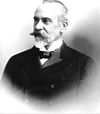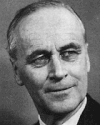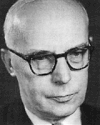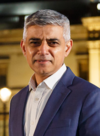User:President of Switzerland/sandbox
List of Presidents of Finland[edit]
Presidents of Finland (1904–present)[edit]
| No. | Portrait | President (Birth–Death) |
Elected | Term of office | Political Party | Notes | ||
|---|---|---|---|---|---|---|---|---|
| Took office | Left office | Time in office | ||||||
| 1 | 
|
Henri Abbott (1833–1905) |
1885 1888 1891 |
10 March 1885 | 10 March 1894 | 9 years | Independent (1885-1891) Moderate (1891-1894) |
|
| 2 | 
|
Walter C. Johnson (1841–1932) |
1894 | 10 March 1894[1] | 10 March 1897[1] | 3 years | Moderate | |
| 3 | 
|
Henri Anderson (1844–1916) |
1897 1900 |
10 March 1897[1] | 10 March 1903 | 6 years | Conservative | |
| (2) | 
|
Walter C. Johnson (1841–1932) |
1903 | 10 March 1903 | 10 March 1906 | 3 years | Moderate | |
| 4 | 
|
Jan Samuel Hayes (1859–1934) |
1906 | 10 March 1906 | 10 March 1909 | 3 years | Agrarian Farmer | |
| (2) | 
|
Walter C. Johnson (1841–1932) |
1909 1912 1915 1918 1921 |
10 March 1909 | 25 December 1923 | 14 years, 290 days | Moderate (1909-1916) Liberal (1916-1923) |
Resigned |
| 5 | 
|
Lucas Lemon (1878–1970) |
— | 25 December 1923 | 10 March 1924 | 76 days | Liberal | |
| 6 | 
|
Henri Romualdo (1880–1948) |
1924 1927 1930 |
10 March 1924 | 10 March 1933 | 9 years | Conservative | |
| 7 | 
|
Ignazio Benson (1879–1954) |
1933 1936 |
10 March 1933 | 10 March 1939 | 6 years | Agrarian Farmer | |
| (5) | 
|
Lucas Lemon (1878–1970) |
1939 1942 1945 1948 |
10 March 1939 | 10 March 1951 | 12 years | Liberal | |
| 8 | 
|
Cameiro Ueli (1890–1965) |
1951 1954 1957 |
10 March 1951 | 27 March 1960 | 9 years, 17 days | Conservative | |
| 9 | 
|
Andrej Lemon (1908–1986) |
1960 | 27 March 1960 | 10 March 1963 | 2 years, 348 days | Liberal | 17 days to form coalition before taking office |
| 10 | 
|
Henri Jenkinson (1910–1994) |
1963 | 10 March 1963 | 10 March 1966 | 3 years | Conservative | |
| 11 | 
|
Marcus Jagland (1922-2012) |
1966 | 10 March 1966 | 10 March 1969 | 3 years | Socialist | |
| (10) | 
|
Henri Jenkinson (1910–1994) |
1969 | 10 March 1969 | 1 July 1972 | 3 years, 113 days | Conservative | |
| (11) | 
|
Marcus Jagland (1922–2012) |
1972 1975 1978 1981 |
1 July 1972 | 1 July 1984 | 12 years | Socialist | |
| 12 | 
|
Antony Cassis (1930-2005) |
1984 | 1 July 1984 | 1 July 1987 | 3 years | Conservative | |
| 13 | 
|
Lily Strömberg (born 1932) |
1987 1990 |
1 July 1987 | 1 July 1993 | 6 years | Socialist | |
| 14 | 
|
Henri Sommaruga (born 1941) |
1993 1996 1999 |
1 July 1993 | 1 July 2002 | 9 years | Liberal | |
| 15 | 
|
S. Ellsverg Evantonia (born 1940) |
2002 | 1 July 2002 | 1 July 2005 | 3 years | Liberal | |
| 16 | 
|
Ueli Solidad (born 1955) |
2005 2008 |
1 July 2005 | 13 September 2009 | 4 years, 74 days | Conservative | Resigned |
| 17 | 
|
Joe Parmelin (born 1970) |
— | 14 September 2009 | 31 June 2011 | 1 year, 320 days | Conservative | |
| 18 | 
|
Khan Helramos (born 1949) |
2011 | 31 June/1 July 2011 | 27 February 2013 | 1 year, 241 days | Socialist | Resigned |
| 19 | 
|
Gianni Paulo (born 1958) |
— | 27 February 2013 | 1 July 2014 | 1 year, 124 days | Liberal | |
| 20 | 
|
Simonetta Jackson (born 1957) |
2014 2017 |
1 July 2014 | 1 July 2020 | 6 years | Conservative | |
| 21 | 
|
Naomie Tusk (born 1986) |
2020 | 1 July 2020 | Incumbent | 3 years, 314 days | Socialist | |
Henri Abbott[edit]
Henri Abbott (1833-1905) was a Finnish politician who served as the 1st President of Finland from 1885 until 1894. He served as an Independent for his first two terms, and a Moderate for his final term.
Abbott's achievements include the writing of the Finland constitution and the creation of a democratically elected office for the Finland head of state and government, ending the previous system which the leader was a member of a council, and the leader rotated each year. During Abbott's time in office, the economy was considered above average. He is considered to be one the best Finnish leaders, mainly for his writing of the constitution and a peaceful leadership.
Walter C. Johnson[edit]
Walter Colton Johnson (1841-1932) was a Finnish politician who served as the President of Finland three times, first from 1894 until 1897, again 1903 to 1906, and his final term, considered to be his best, lasted 14 years from 1909 until his resignation in 1923.
Johnson was a writer of the 1884 Constitution, and served as the first deputy prime minister under his mentor, Henry Abbott. In 1894, he ran for the moderate party leadership, and won. He would later win the election. Abbott's first term was marked with progress towards isolationism and the freedom of religion. While the economy declined, it remained stable. While his leadership was respected, it wasn't enough to keep his party in control, and lost the 1897 election and the 1900 election.
In 1903, Johnson managed to win the election with the help of the Agrarian Farmer party, and the two parties formed a coalition. His second term was considered to be lacking of much event or strong leadership. His party was voted out in 1906, because the Agrarian Farmer party decided to switch coalition in favor of the the conservatives.
In 1909, Johnson was narrowly voted back in office, and returned to the premiership. During this third term, the economy rose, the constitution was amended to allow women voting rights, and the chamber was split to rise the members of parliament from about 70 to 200 seats. During World War 1, Johnson continued to isolate the country from the war, and decided to remain neutral. While remaining neutral, Finland did secretly accept German refugees coming into the country. In 1915, Johnson dissolved the moderate party and formed the Liberal Party. In 1920, Finland joined the League of Nations as a neutral state. In 1923, Johnson resigned from office, citing age as he was 82 years old at the time of resignation, leaving office with high popularity.
Henri Anderson[edit]
Henri Anderson was a Finland politician who served as President of Finland from 1897 until 1903, for two terms.
Anderson was a conservative. His leadership was originally marked with economic growth, but would eventually decline. He was known for being a war hawk, and joined the bloody Spanish American war on the Spanish side. Many people believed that Anderson had joined a war that easily could have been avoided, as neither nation was planning to attack Finland. 21 thousand Finnish people died in the war, as most citizens aged 17 to 27 were drafted. Anderson’s involment in the Spanish-American war cost him the 1903 election.
Jan Samuel Hayes[edit]
Jan Samuel Hayes was a Finnish farmer and politician who served as president for 1906 until 1909. Jan Samuel Hayes was a leading agrarian, and was passionate for farmers' rights.
Hayes became president in a coalition. While Hayes didn't accomplish much, he did support the rights of working people and put an end to expensive campaign donations, setting a new precedent of 1 dollar donation per person instead, a system still used in Finland today.
Lucas Lemon[edit]
Lucas Lemon (1878-1970) was a Liberal Finnish politician who served as President of Finland from 1939 through 1951, but also served a short 5 month stint in 1923-1924.
Lucas Lemon was a centrist who first became president in 1923 after Walter C. Johnson resigned. Lucas Lemon didn't have a chance to accomplish much, but had endorsed fiscally conservative and socially liberal legislation. Lemon lost in 1924, likely because of Romuldo's popularity and Lemon's status as a widely unknown politician.
Lemon remained leader of the liberal party during the 15 years he did not serve as prime minister. Lemon would finally get elected in 1939, with a margin of just one seat, and served a coalition with the then-popular Agrarian Farmer party.
Lemon's economic views shifted from what was once center-right into a more moderate position, supporting a mixed economy of socialism and capitalism. Lemon remained neutral during world war 2 to avoid German occupation. During the Neutrality Speech of 1940, Lemon stated "this war cannot convince us to lose lives lost." Lemon opposed America's policy of Japanese internment camps, and often questioned United States President Franklin Roosevelt. Lemon remained popular after World War II, but began to become more irrelevant and lost narrowly in 1951, the main reason was that people wanted new leadership after twelve years.
Henri Romualdo[edit]
Henri Romualdo (1880-1948) was the Conservative President of Finland from 1924 till 1933.
Henri Romualdo led Finland through economic prosperity. A total of 9 different surplus were announced during his tenure, and small business was growing rapidly. Henri Romualdo granted Asians the right to vote during his tenure. He was known for being more globalist then most predecessors, and offered aid to the American-backed side of the Nicaraguan war.
Romualdo was a very popular leader, but during the multicountry Great Depression crisis in the early 30s, many Finland people feared a crash was near as the economy dipped towards the end of his tenure. Romualdo lost the 1933 election to the Agrarian Farmer party, who secured their first majority in history.
Ignazio Benson[edit]
Ignazio Benson (1879-1954) was the President of Finland from 1933 until 1939. Benson was a leading member of the Agrarian Farmer party.
During Ignazio Benson's campaign for President in 1933, Benson focused on cutting tariffs so that the budget would instead support economic retainment and farmers. Benson supported Franklin Roosevelt's vision of the new deal. Benson won in a landslide election against the Conservatives and Liberals. During Benson's tenure, Finland became one of the few countries not to be struck by economic decline, but instead the economy in Finland rose during the 1930s. The salary payment was higher in the 1930s then any other country in the world. Benson also appointed common people to the cabinet instead of politicians, such as farmers, doctors, economists, and teachers, fulfilling Benson's idea of department experience, which each department was ministered by someone who worked in that department. Ignazio Benson continued to serve as vice president after he was president under Lucas Lemon. However, Benson, while a originally a supporter of pacifism, resigned from the lemon administration as Lemon wanted to remain neutral and Benson did not. This upset Benson, as he was a strong opponent of Nazi Germany in World War II, and wanted to join the Allies in the fight to bring democracy to the Germans. Benson is often considered by historians to be the greatest Finland leader for maintaining a high economy and supporting the "common man."
Cameiro Ueli[edit]
Cameiro Ueli (1890-1965) was the President of Finland from 1951 until 1960.
Cameiro Ueli was a member of the Conservative party who defeated Lemon's liberals in 1951, after 12 years in power. Ueli was a member of the moderate wing. Cameiro Ueli was known for being a fiscal conservative, and was known for the red tape plan, supporting small business growth and jobs. Ueli also banned the ownership of weapons or bearing arms of any kind with the exception of armed forces members and professional hunters. Ueli was considered to be a mildly more respected leader by the common man than Lemon. Ueli left office in 1960 with a 81 percent approval rating, the 3rd highest of all Democratic world leaders at the time.
Cameiro Ueli was also the first leader of Finland to promote business innovation.
Andrej Lemon[edit]
Andrej Lemon (1908-1986) was the Finnish President from 1960 until 1963.
Andrej Lemon was the son of former president Lucas Lemon. In the close 1960 election, Jagland's Socialists received 70 seats, and both Lemon's Liberals and Jenkinson's Conservatives got 65 seats each, all three candidates being far from a majority. First the first and only time so far in Finland, all three parties agreed to form a super coalition, nominating Lemon as President, Jenkinson as Prime Minister, and Jagland as Vice President. This means that all three parties, the Liberals, the Conservatives, and the Socialists served together. Other than the coalition, Lemon's leadership wasn't much of note besides the secularization of public schools. Lemon left office in 1964, and lived the rest of his retirement in peace and seclusion.
Henri Jenkinson[edit]
Henri Jenkinson (1910-1994) was the President of Finland from 1963 until 1966, and 1969 until 1972. He was a conservative.
Jenkinson was a staunch supporter of Christian Democracy and opposed the separation of church and state, but Jenkinson acknowledged that he could not do anything about it. His leadership oversaw the biggest tax cuts up to that point. He would be voted out for Marcus Jagland and the Socialists in 1966, but Jenkinson's conservatives would return again in 1969 with a Liberal coalition. Jenkinson would be voted out again in 1972 for Marcus' Socialists. Jenkinson is considered to be a respected figure within his party, and historians ranked Jenkinson's leadership around average.
Marcus Jagland[edit]
Marcus Jagland (1922-2012), was a Finnish politician and the President of Finland from 1972 until 1984, but also served in the late 1960s. He is the first Socialist prime minister of Finland.
Marcus Jagland was originally the leader of the leftist faction of the liberal party in the early 1950s, but would later switch parties and become a socialist. In 1960, Jagland won the most seats, but failed to get a majority, and served in the all-party coalition as Vice President. He narrowly lost in 1963, but then won in 1966.
During Jagland's first term, he brought back the policy of former president Ignazio Benson of Department experience. Jagland introduced free college tuition, and became the First Nation to legalize same-sex marriage in 1967. Many people in Finland found this to be a shocking and unexpected event, and voted him out in 1969.
In 1972, Jagland was voted back in. During his accomplished second tenure, he raised the minimum wage 4%, inflation raised 0.2%, established a universal healthcare system, recognized the working people over the elites, raised the cost of fossil fuels, and successfully established a law requiring the of pairing solar panels with all houses, no cost added. Abortion was legalized, and private prisons were abolished. In 1973, Finland joined the European Union. Before the 1984 election, with very high popularity, he announced he would retire from politics when his term was over, and resigned as party leader. The conservatives would go on to win 1984, with historians claiming that, had Jagland remained party leader, the socialists would be able to withstand the conservative wave of the 1980s. Jagland is ranked by historians to be the third best president for his ability to make and keep promises.
Antony Cassis[edit]
Antony Cassis (1930-2005), was the Conservative President of Finland for one term from 1984 until 1987. He was elected during the worldwide conservative wave.
Cassis was elected in 1984, with many historians claiming the retirement of Marcus Jagland to have played a large part. Cassis was a contemporary of Ronald Reagan and used Reaganism to support his political philosophy. He was a neoconservative, and worked with both center-right and right-wing politicians, and opposed the far-right. Cassis was in strong opposition to communism, socialism, workers' unions, and nuclear weapons. He lost the 1987 election, and the socialists retained power.
Lily Strömberg[edit]
Lily Strömberg (born 1932 [age 90]) was the President of Finland from 1987 until 1993.
Strömberg came to power by forming a coalition with the liberals. She was the first Female President. Strömberg was a supporter of unions and opposed trusts and monopolies. She was a member of the Socialist party, and was a member of the more moderate, center-left faction.
Henri Sommaruga[edit]
Henri Sommaruga (born 1941 [age 81]), was the President of Finland from 1993 until 2002. He is a Liberal.
Henri Sommaruga served as vice president under the coalition from 1987 until his election. Sommaruga was elected in a landslide, following the election of similar third way liberals Bill Clinton and Jean Chretien. Henri Sommaruga was a very popular leader in the beginning, following the third way policy of capitalist openness. He was more leftist on social issues though, making him popular across the aisle. Sommaruga presided over a surplus, road funding, and the returning of indigenous lands. Sommaruga, left office still popular, but less popular than when he started. He would be succeeded by liberal colleague Ellsverg Evantonia
S. Ellsverg Evantonia[edit]
Simon Ellsverg Evantonia (born 1940 [age 82]), was the President of Finland for one term between 2002 until 2005. He is a liberal. His leadership came after that of his former student Henri Sommaruga. Evantonia's term was marked with little progress and economic decline, including the fact of Evantonia only making 7 speeches during his leadership. He lost the 2005 election to conservatives, and became an irrelevant figure. He did have a successful career before he was president, including working as a free trade agreement authorizer.
Ueli Solidad[edit]
Ueli Solidad (born 1955 [age 66]), is a former Finnish politician who served as the President of Finland from 2005 until his impeachment in 2009.
Solidad is a member of the Conservative party. He defeated the liberals after 12 years. Solidad supported the United States Invasion of Iraq, but Finland did not go to war as congress blocked the bill from passing. Solidad cut taxes but increased spending, a plan that was considered controversial by all three parties. Solidad still managed to win re-election in 2008, as protests against the Solidad government were strong around this time. In 2009, it was revealed that Solidad accepted 3 million euros from criminals in return for pardons. Solidad was impeached. The decision was unanimous.
Solidad was suspended from his own party a week after impeachment. Later, in 2015, it was revealed that another 2 million euros was used, again for pardons, jail forgiveness, and embezzlement on his own terms. Solidad was sentenced to 7 years in prison. In 2017, it was revealed that while on the campaign trail, Solidad put his hand through a supporter's bra and touched her breast, and then winked suggestively. Solidad was sentenced to 6 more years in prison for sexual harassment, with a combined total of 13 years. Solidad's release year, as of now, is 2028.
Solidad is ranked as the worst President in Finland's history by historians, for corruption and poor leadership.
Joe Parmelin[edit]
Joe Parmelin (born 1970 [age 50]), is a Finnish politician who served as the President of Finland after Ueli Solidad's impeachment in 2009 until he was defeated in 2011.
Joe Parmelin was always a political moderate in the Conservative party. He was elected as a member of parliament in 2002. In 2009, he ran for the Conservative leadership and won, and he would be sworn in as Prime Minister at midnight. During Parmelin's leadership, the economy rose 2% and inflation decreased 1%. Although Parmelin was considered to be a more respected figure and leader than Ueli Solidad, many voters belived that the damage caused by his predecessor was done, and they voted Parmelin out for a Socialist government under Khan Helramos.
Khan Helramos[edit]
Khan Helramos (born 1949 [age 72]) was the President of Finland from 2011 until his resignation in 2013. He served the first Socialist government in 18 years.
Khan became leader of the Socialist party in 1993 and lost to the liberals. Khan eventually became leader again in 2000 and served as leader until 2013. In 2011, Khan became president, forming a coalition with the liberals.
During Khan's leadership, inflation rose. Khan also served as a representative of the European Union's parliament. He admitted Finland into the United Nations. During Khan's leadership, he spread the word of neutrality to other nations, advising other countries to do the same. The Finnish Parliament voted No Confidence in the Khan leadership, and the Liberal vice president became the president in 2013.
Khan is still a member of the European parliament and has written a book called "The Way to Make a Developed Country Safe: Neutrality Globalism." The book has 675 thousand sales.
Gianni Paulo[edit]
Gianni S. Paulo (born 1958 [age 62]), was the Liberal President of Finland for one year between 2013 and 2014. He originally was the vice president in a Socialist-Liberal coalition, and was promoted to President after the dismissal of Khan Helramos. During Paulo's leadership, unemployment went up from 5% to 10%, but inflation went down from 2% to 1.4%.
Paulo was voted out in 2014, never receiving a majority.
Simonetta Jackson[edit]
Simonetta Jackson (born 1957 [age 63]), is a Finnish politician who served as the President of Finland for two terms, from 2014 until she was defeated in 2020. She is a center-right Conservative.
During Simonetta Jackson's tenure, unemployment went down from 10% to 5%, Business innovation was strong and the labor force was ranked the best in the world. Simonetta Jackson granted transgender people the right to vote. Jackson made Finland a collaborative world power, and ended Finland's reputation as a secluded country, while maintaining the neutrality aspects.
During the end of Jackson's tenure, the coronavirus pandemic began and, while her response to the pandemic was well-received, she was voted out in 2020 for new leadership, as her opponent was even more popular with the Finnish people.
Naomie Tusk[edit]
Naomie Tusk (born 1986 [age 36]), is a Finnish politician who is the current President of Finland, who has held that position since July 1, 2020. She is a member of the Socialist Party. She is also the first LGBT President of Finland, and the first and to date only openly Bisexual world leader in history.
Tusk became a member of parliament in 2005, at the age of 19, becoming the youngest member in history to date. Tusk first became leader of the Socialist Party in 2014. Although Tusk had 9 years of experience, her age may have been a factor in losing to Jackson's Conservatives. She ran and won the Socialist nomination again in 2020, and faced Simonetta Jackson once again. Tusk won the election with a majority.
Naomie Tusk's accomplishments include the legalization of gender reassignment surgery, an increase in the federal government's funding in education and educators, collaboration with other world leaders, and new bakeries specifically for the homeless or malnourished.
Excerpt from Tusk's acceptance speech:
"I'll step down as president as my first action. Preside over all other people is how the word "President" is defined. As an equal partner with the people, I will make decisions based on what they want, not just what I want, what the government wants, or what would offer me the biggest profit."
Elections[edit]
| Year | Party | Leader | Seats | Seats Gained | Notes |
|---|---|---|---|---|---|
| 1885 | Independent | Henri Abbott | 10 / 10 |
||
| 1888 | Independent | Henri Abbott | 15 / 15 |
||
| 1891 | Moderate | Henri Abbott | 18 / 25 |
||
| National Farmers' League | Pirmin Staub | 7 / 25 |
|||
| 1894 | Moderate | Walter C. Johnson | 15 / 33 |
||
| Conservative | Henri Anderson | 10 / 33 |
|||
| National Farmers' League | Giovanni Meier | 8 / 33 |
|||
| 1897 | Conservative | Henri Anderson | 17 / 45 |
Led a Minority Government[2] | |
| Moderate | Walter C. Johnson | 16 / 45 |
|||
| National Farmers' League | Giovanni Meier | 12 / 45 |
|||
| 1900 | Conservative | Henri Anderson | 23 / 48 |
||
| Moderate | Walter C. Johnson | 17 / 48 |
|||
| Agrarian Farmer | Giovanni Meier | 8 / 48 |
|||
| 1903 | Moderate | Walter C. Johnson | 23 / 48 |
||
| Conservative | Henri Anderson | 16 / 48 |
|||
| Agrarian Farmer | Giovanni Meier | 11 / 48 |
|||
| 1906 | Moderate | Walter C. Johnson | 21 / 55 |
||
| Agrarian Farmer | Jan Samuel Hayes | 18 / 55 |
Led a Minority Government[3] | ||
| Conservative | Henri Anderson | 16 / 48 |
|||
| 1909 | Moderate | Walter C. Johnson | 22 / 63 |
Led a Minority Government[4] | |
| Agrarian Farmer | Jan Samuel Hayes | 21 / 63 |
|||
| Conservative | Henri Anderson | 20 / 63 |
|||
| 1912 | Moderate | Walter C. Johnson | 39 / 78 |
||
| Conservative | Siad Gertsch | 20 / 78 |
|||
| Agrarian Farmer | Jan Samuel Hayes | 19 / 78 |
|||
| 1915 | Moderate | Walter C. Johnson | 32 / 78 |
||
| Agrarian Farmer | Jan Samuel Hayes | 24 / 78 |
|||
| Conservative | Siad Gertsch | 22 / 78 |
